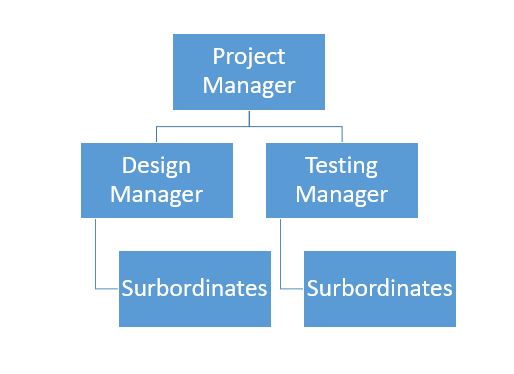Team Structure in Project management: 3 easy, practical examples
What is team structure in project management? If you’ve worked with a team before on any project, you’ll agree that every team has its unique structure. The structure of a team influences how successful its team will manage and succeed at a project.
So then,
What is a Team Structure?
87 out of 100 top leaders in their company said they know how important project management is when they got asked in a survey by Statista. But the truth is that project management would have loopholes without a defined team structure.
When people work together as a team, everyone needs to know their duties and responsibilities and how they should work together. “Team structure” is a better phrase to describe that.
That’s because team structure helps a team work better by ensuring everyone knows their jobs, talks to each other easily and solves problems quickly. The team structure also helps everyone feel like they’re a part of something essential and working towards a common goal. Just like a unit of command, as one of the 14 principles of management emphasizes.
In other words, a team structure helps you grasp how the leaders of your team, the team’s responsibilities, the things they do, and each team member are all related.
Team Structure In Project Management
A team structure in project management refers to how a project manager or top managers arrange individuals to work together toward the project’s aims and objectives. Usually, the team defines its structure through defining the roles and responsibilities of each member, establishing reporting relationships, establishing communication channels, and outlining the processes for making decisions.
Take building a new website as an example. You’ll agree that the team structure for this project could have a project manager who leads everything, a group to design the website’s appearance, a group to build the website, and a group to make sure everything is working before it goes live. That way, each person on the team has a job to do. But they all work together to ensure the website is great when it launches.
Now you see that the purpose of having a team structure is to support the project objectives, promote effective collaboration, and ensure accountability.
With that said, the three most commonly used team structures in project management are functional, matrix, and project-based structures.
Types of Team Structure In Project Management
#1. Functional team structure in Project Management
In project management, a functional team structure means grouping people based on their job(s). In other words, each team consists of people with similar skills who work together on a project to reach its goals.
For instance, for a website project, there could be teams for design, building, testing, and checking that everything works. This way of organizing is good because it allows people to use their special skills, making the project more effective and efficient. But, it can also make it hard for the teams to work together and share information.
#2. The Matrix team structure in project management
A matrix team structure in a big project means everyone has two bosses. One boss is in charge of the whole project and ensures everything is going according to plan. The other boss is in charge of the specialized type of work they do, like being a designer, builder, or tester.
For example, the project boss in a building project takes charge of completing the entire building on time, while the functional boss supervises the architects and builders.
Another example, the project boss might guarantee that the production of a new toy is completed on time. Whereas the functional boss takes up the responsibility of supervising the people who design it, test it, and ensure it works. But then, all the workers work together to finish the project, even though they also have to listen to their boss for help with their specific job.
#3. The Project-based team structure in project management
The project-based team structure in project management refers to a type of organizational structure where individuals are grouped specifically for the duration of a project. In this structure, individuals report to the project manager, who is responsible for leading and managing the project team.
Projects that demand high flexibility, speed, and teamwork often adopt the project-based structure. This structure ensures efficient and effective project completion as all team members concentrate solely on the project goals and objectives
But poor management or conflicting priorities among team members can cause confusion and disorganization in the team
So a project-based team is a unique group of individuals collaborating on a specific project. For example, if you and a group of your friends or colleagues want to have a big party to help others, you would get a leader, called a project manager, to help you guys. And your team would have different people with different jobs, like decorators and food makers, who all come together to make the party a success.
Another example is when you want to make a computer program. The project manager of your team for the project will help your team, which may consist of computer builders, picture makers, and testers, to work together to finish the program. Once the project is completed the team members will return to their roles.
Project Team Structure Roles And Responsibilities
When a group of people works on a project, each person has a special task to do. And that can be different based on the size and difficulty level of the project. But usually, there are some jobs that people do often and these are some of them:
-
Project Manager
The person in charge of the project is called the Project Manager. They make sure the project is planned, done, and finished well. They keep the project moving forward and ensure it stays within the budget and timeline. They also let others who are interested know how the project is going.
2. Team Lead
As a lead team leader, you’re in charge of a group of people working on a segment of the project. In other words, a team lead ensures the group’s work aligns with the project’s goals. That you help solve problems and give jobs to people as needed.
3. Subject Matter Expert
A subject matter expert is someone on the team who knows a lot about a specific thing significant to the project. And as such, he(she) helps others by giving advice, showing them what to do, and being there to support them.
4. Developer
Developers design, code, and test the technical solutions required for the project. They may also participate in project planning and design.
5. Tester
Testers verify that the solutions developed for the project meet the requirements and specifications. They may also identify and report any defects or problems.
6. Designer
Designers make pictures and graphics for the project. And that could include drawings, maps, and how the project looks and works for people using it.
7. Business Analyst
The business analyst defines and documents the business requirements for the project, including process flows and system requirements.
8. Quality Assurance
Quality assurance team members ensure the project delivers a high-quality outcome. They review project deliverables and implement quality control processes to reduce risks.
9. Project Support
Project support staff provide administrative and logistical support to the project team. They may schedule meetings, maintain project documentation, and support communication efforts.
Final on Team Structure In Project Management
Now you may want to ask what’s the difference between team structure in project management and organizational structure? Interestingly, the primary difference is that the former is a temporary and specific structure created to achieve specific project objectives. While the latter is a permanent and more general structure that defines the roles, responsibilities and reporting relationships of individuals within the organization.
So, you can say the project team structure is often nested within the organizational structure and may utilize resources from various parts of the organization. But ultimately, the project team is accountable to the project sponsor and has a defined end date.
Consequently, the organizational structure provides the framework for the project team structure. And, of course, help to ensure that resources and expertise are available to support the project.








